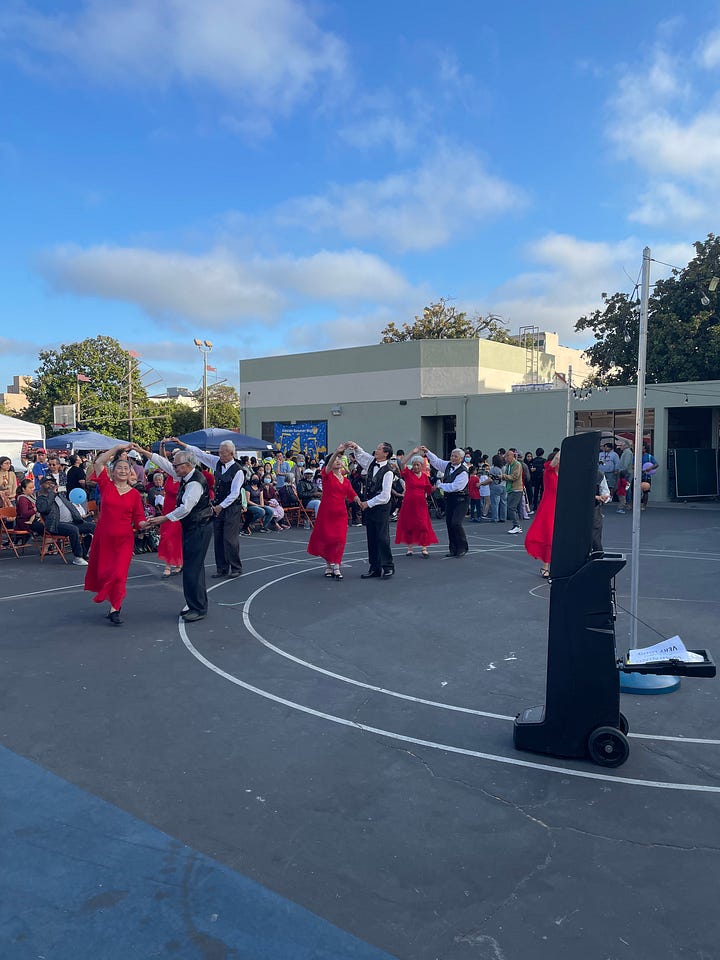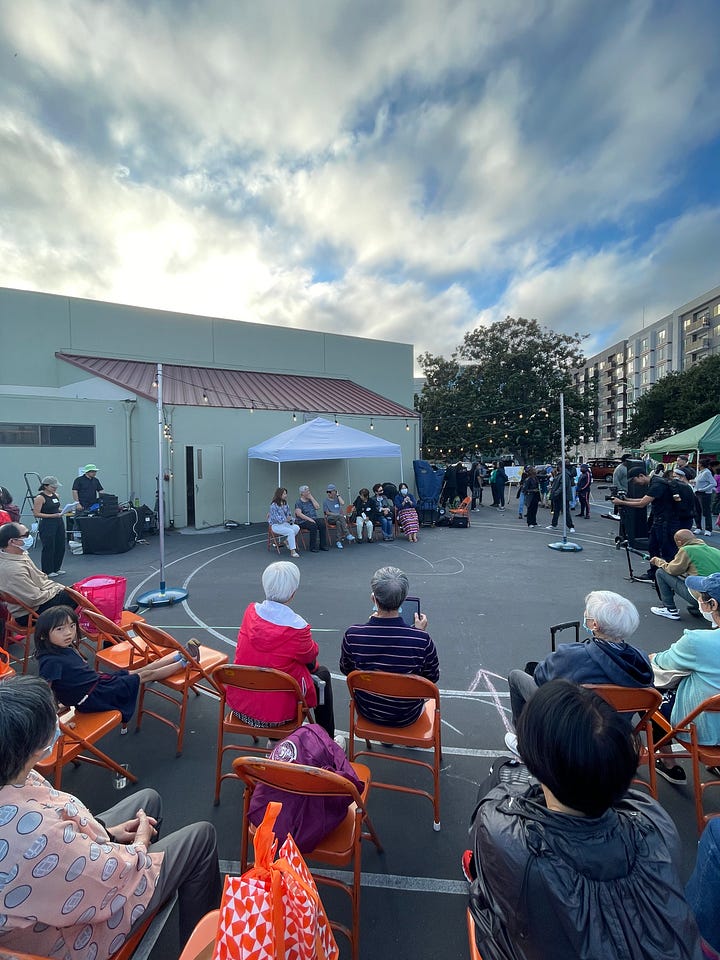An Emergent Strategy
I have returned to Emergent Strategy by Adrienne Maree Brown after months of nudging by my partner. Patient nudges - heavy with kindness, light on expectations - that I now understand to mean “her words are your words”.
In this, my second reading, I am finding:
—orientation to "see our own lives and work and relationships as a front line, a first place we can practice justice, liberation, and alignment with each other and the planet”
—anticipation to “cultivate the muscle of radical imagination needed to dream together beyond fear”
—permission to “create futures in which everyone doesn’t have to be the same kind of person”
—validation that “what you pay attention to grows”
You and I are paying attention to the idea of culture therapy. You and I and it are growing.
Note 8: Interdependence
"We learn the natural world is to be manicured, controlled, or pillaged to support our consumerist lives. Even the natural lives of our bodies get medicated, pathologized, shaved, or improved upon with cosmetic adjustments.” - Adrienne Marie Brown, Emergent Strategy
The term social connection has emerged as a focal point in our country’s growing discourse about mental health. In March 2023, the Surgeon General even laid out a “Framework for a National Strategy to Advance Social Connection.”
A whirlwind three day trip to Alaska has left me in search of a different word: Interdependence.
At the Alaskan Native Heritage Center, I learned about the Inupiaq, Athabascan, Yup’ik, Cu'pik, Unangax, Alutiiq, Eyak, Haida, Tsimshian, and Tlingit Native territories and cultures. As I toured the grounds of the Center, I read signs describing the migratory nature of communities and definitions of seasons beyond the four I know. I walked into structures built into sides of hills that acted as meeting, work, and living spaces that were left and returned to throughout the year. I stared at pictures and read stories that were told almost entirely from the “we” perspective.
These experiences reminded me that there is a difference between connection and interdependence. You and I are connected through the words on this screen. Perhaps we are also connected by a set of shared beliefs or memories. In this way, we have achieved the Surgeon General’s call to action. Our connection, however, dies if these words go away. The prioritization of an awareness of others’ existence, ideas, and contributions is not the same as the prioritization of a nourishment of the cause and effect dynamics that happen because of others and our environment.
In Alaska, the beautiful and giving terrain in one season becomes a brutal and barren one in another. Native Alaskan communities prepare for this by adapting their own lives instead of trying to conquer the land itself. I know nothing is pure and all is not what it seems, but I do long for more closeness to approaches that bear such respect for interdependence.
The majority of us live in a world where boundaries are used as therapeutic coping tools, where your anxiety is your own monster and mine my own monster, where healing and hurting are opposite extremes. In this type of world, will connection be enough?
Note 9: culture therapists
“Are you actively practicing generosity and vulnerability in order to make the connections between you and others clear, open, available, durable? Generosity here means giving of what you have without strings or expectations attached. Vulnerability means showing your needs.” Adrienne Maree Brown, Emergent Strategy
culture therapists are all around us. As I’ve come to learn, we are a collective…of collectives. Here are some artist-activists who are part of this journey and who have given me life in recent months.
Ayesha Walker (Be Imaginative) | Jonel Seon (Grand Nationxl) | Jason Chu (Jason Chu Music) | Rocco Kayiatos (Camp Lost Boys) | Kate Spacek (Public Imagination Collective) | Zac Westbrook (PABLO CIRCA) | Mina Aslan (Aslan)
Note 10: Asian American Mental Health
"My vision is changing our how, more than seeing clearly our what. I see a how where we are all much more comfortable with change, and with our personal power to change conditions.” - Adrienne Maree Brown, Emergent Strategy


Last Friday, I attended a community event celebrating Korean and Chinese elders and the Harvest Festival at Lincoln Square Park in Oakland’s Chinatown. The event was co-sponsored by the AAPI community–focused art nonprofit Cut Fruit Collective, Oakland Chinatown Oral History Project, and Ssi Ya Gi.
Lincoln Square Park is always a vibrant and joyful scene. Friday nights there in the summer consistently come with community programming, food, art, games, resource tents, and performances.
As a Chinese American, moving to California from the mid-west / east coast felt like a homecoming. For the first time in my life, I walked into rooms and the first thought in my head was not that others were saying to themselves “look at that Chinese kid.” Experiencing Lincoln Square Park on summer Friday nights felt like a home finding. For the first time in my Bay Area life, I walked into a space and thought, my grandma is here somewhere.
That evening, I came carrying my culture therapy lens. While I anticipated being able to find examples of culture therapy in the elders’ stories, I did not expect to find a much more obvious connection to mental health. Nestled across the calligraphy booth were the Asian Health Services Specialty Mental Health and Mental Health Association for Chinese Communities booths. Seeing such public displays for Asian American mental health resources felt so powerfully radical.
As I wandered from booth to booth, so too did a little girl and her grandfather. By luck, we happened to stop at the inflatable archery station, the arts and crafts tables, and Cut Fruit Collective’s food and zine booths at precisely the same times. In between, we peeked at the mental health booths I named above. I can’t claim to know what the grandfather or little girl thought about at each stop, but I saw how deeply curious they both were every time. That is powerfully radical to me because in those moments, I saw an avenue for two vastly different generations of Asian Americans to have a shared experience with mental health concepts in an entirely cultural and familiar setting.
I remain unsure, however, of what the next experience of mental health should be for this Chinese grandfather and grandchild. To draw from Kai Cheng Thom’s words in THE MYTH OF MENTAL HEALTH (published in the Asian American Literary Review’s DSM: Asian American Edition): “In our rush to treat the symptom, we have missed the meaning behind it; that is to say, there is a reason why so many of us are anxious and depressed, traumatized and psychotic, self-loathing and suicidal - a reason greater than simple biological illness or personal failure.”




